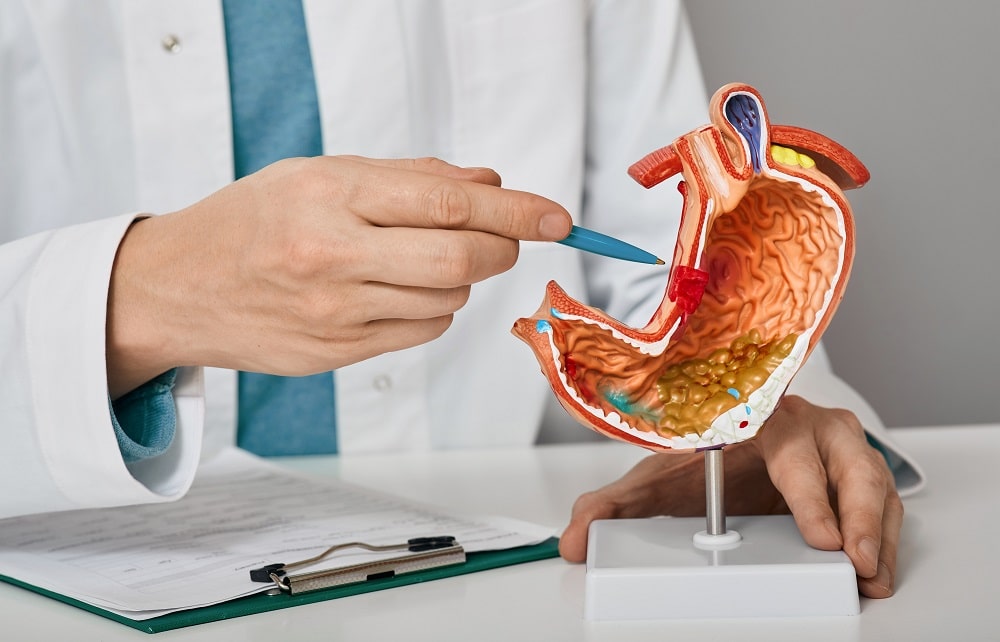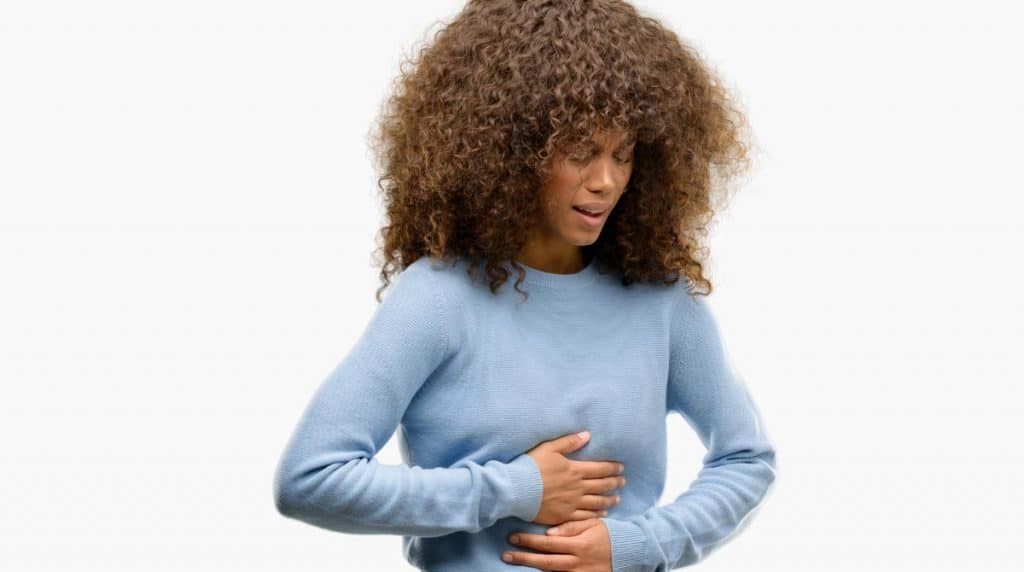Peptic Ulcer

Heartburn or indigestion is a common problem among adults and is frequently assumed to be a normal part of life. Many people fail to report their symptoms to their healthcare providers2.
Heartburn is a burning feeling in the chest caused by stomach acid travelling up towards the throat (acid reflux). If it keeps happening, it’s called gastro-oesophageal reflux disease (GORD)3.
OVERVIEW
Peptic ulcers are open sores that develop on the inside lining of your stomach (gastric ulcers), the upper portion of your small intestine (duodenal ulcers)4 and the lining of the lower part of the oesophagus, at the junction of the oesophagus and stomach (oesophageal ulcer)5.
The most common symptom of a peptic ulcer is stomach pain. Another symptom of peptic ulcers can be heartburn4.
Heartburn (indigestion), occurs as a result of acid reflux, which is caused when stomach acid flows up into your oesophagus. It is a burning pain in your chest, just behind the breastbone, which is often worse after eating, in the evening, or when lying down or bending over6.
Gastritis is a general term for a group of conditions with one thing in common: inflammation of the lining of the stomach. The inflammation of gastritis is most often the result of infection with the same bacterium that causes most stomach ulcers or the regular use of certain pain relievers. Drinking too much alcohol also can contribute to gastritis7.
CAUSES AND RISK FACTORS
Peptic ulcers occur when stomach and bile acids, eat away at the inner surface of the stomach or small intestine. The acid can create a painful open sore that may bleed4.
Common causes of peptic ulcers includes4:
- A bacterium: Helicobacter pylori ( Pylori) bacteria commonly live in the mucous layer that covers and protects tissues lining the stomach and small intestine. Often, the H. Pylori bacterium causes no problems, but it can cause inflammation of the stomach’s inner layer, producing an ulcer.
- Regular use of certain pain relievers: Taking aspirin, as well as certain over the counter and prescription pain medications called nonsteroidal anti-inflammatory drugs (NSAIDs), can irritate, or inflame the lining of your stomach and small intestine.
- Other medications: Taking certain other medicines along with NSAIDs, such as steroids, anticoagulants, low-dose aspirin, certain selective serotonin reuptake inhibitors (SSRIs), and some medicines that reduce bone loss, can significantly increase the chance of developing ulcers.
Risk factors that weaken the protective mucosal barrier and slow the healing of existing ulcers include: 4,8,9
- Alcohol can irritate and erode the mucus lining of the stomach and increase the amount of acid produced
- Untreated stress
- Caffeine (e.g., tea, coffee, and colas)
- Cigarette smoking
- Spicy foods.
Obesity has been shown to have an association with peptic ulcer disease.
SIGNS AND SYMPTOMS
- Burning stomach pain
- Feeling of fullness, bloating or belching
- Intolerance to fatty foods
- Heartburn
- Nausea
The most common peptic ulcer symptom is burning stomach pain. Stomach acid makes the pain worse, as does having an empty stomach. The pain can often be relieved by eating certain foods that buffer stomach acid or by taking an acid-reducing medication, but then it may come back. The pain may be worse between meals and at night4.
Many people with peptic ulcers do not even have symptoms4.
Less often, ulcers may cause severe signs or symptoms such as4:
- Vomiting or vomiting blood — which may appear red or black
- Dark blood in stools, or stools that are black or tarry
- Trouble breathing
- Feeling faint
- Nausea or vomiting
- Unexplained weight loss
- Appetite changes
DIAGNOSIS
See your doctor if you have the severe signs or symptoms listed above. Also, see your doctor if over-the counter antacids and acid blockers relieve your pain but the pain returns4.

IMPACT ON QUALITY OF LIFE
If you have been diagnosed with a peptic ulcer or peptic ulcer disease, your healthcare provider will provide medications to reduce stomach acid. Lifestyle is also an important part of your treatment plan. Reducing stress levels, eating healthy, and avoiding alcohol and certain medications, for example, can help to relieve symptoms and help ulcers to heal10.
TREATMENT
The choice of treatment depends on whether the ulcer is caused by infection with H. Pylori. Regardless of whether the bacteria is the cause, reducing acid in the stomach is an important focus of treatment9.
The following treatments are recommended for ulcers9:
- Lifestyle changes: Quit smoking, avoid alcohol, aspirin, and NSAIDs
- Acid-blocking medications
- Medications that protect the lining of the stomach and duodenum
- “Triple-therapy” or “dual-therapy” regimens for ulcers caused by Pylori.
Several types of medications are used to treat ulcers9:
- Antacids: These non-prescription medications simply neutralize the acid.
- Histamine (H2) blockers: These are acid-blocking medications widely used in the treatment of peptic ulcers.
- Acid pump inhibitors: These medicines are also known as proton pump inhibitors (PPIs).
- Antibiotics: As part of a combination regimen, antibiotics eradicate Pylori, the bacteria that causes ulcers in many people.
- Protective agents: These medicines do not affect the amount of acid in the stomach; instead, they protect the mucous lining of the stomach from acid: Sucralfate forms a protective film over the mucosa in ulcerated or inflamed areas of the stomach and protects the gastric mucosa and has the ability to absorb gastric acids and bile acids.
PREVENTION AND LIFESTYLE CHANGES
Preventing infection with H. Pylori is a matter of avoiding contaminated food and water and adhering to strict standards of personal hygiene9.
If you need the pain relief and anti-inflammatory action of aspirin or an NSAID, you can reduce your risk of ulcers by trying the following9:
- Try a different NSAID, one that is easier on the stomach
- Reduce the dose or the number of times you take the medication
- Substitute another medication, such as paracetamol
- Talk to your healthcare professional about how you can protect yourself.
Following the treatment recommendations of your healthcare professional can help prevent the recurrence of ulcers. This includes taking all medications as prescribed, especially if you have an H. Pylori infection.
SUCRALFATE
Sucralfate forms a protective film over the mucosa in ulcerated or inflamed areas of the stomach and protects the gastric mucosa.
Sucralfate is used to treat and prevent the return of duodenal ulcers (ulcers located in first part of the small intestine). Treatment with other medications, such as antibiotics, may also be necessary to treat and prevent the return of ulcers caused by a certain type of bacteria (H. pylori). Sucralfate is in a class of medications called protectants. It sticks to damaged ulcer tissue and protects against acid and enzymes so healing can occur1.
ULSANIC is indicated for gastric and duodenal ulcers, chronic gastritis, and reflux oesophagitis. ULSANIC produces relief of subjective symptoms of peptic ulceration e.g., epigastric pain, hyperchlorhydria, vomiting and is also indicated for maintenance treatment after a successful endoscopically proven, recently healed duodenal ulcer.
ULSANIC is available in 3 dosage forms:
- ULSANIC Effervescent Tablets
- ULSANIC 1 g Tablets
- ULSANIC Suspension


Related Brochures

ulcerative-colitis
